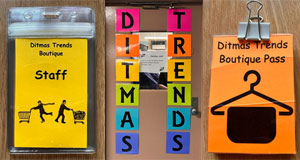A Good Prompt is Worth 1,000 Words
Good prompts can set your learners free

Over the past thirty years I have written curricula and taught curriculum writing. During the course of my career, I have seen curriculum used as a weapon and as a security blanket. Curriculum is often arbitrary, created far away from the students subjected to it.
Seymour Papert used to ask why, if we understand that at best the curriculum covers a billionth of a percent of the knowledge in the universe, do we spend so much time quibbling over which billionth of a percent is so important?
A Good Prompt
I know that much is expected of today's teachers and students. I also know that the richest learning experiences and greatest demonstrations of student mastery have emerged from situations where maximum flexibility is exercised. If deep learning is the goal, then when it comes to curriculum, less is more!
For years, I have watched kids in my classes do remarkable work without being taught to do so. I marveled at how participants in the Constructing Modern Knowledge institute could write a crazy project idea on the wall and then accomplish it within a matter of hours or days. I watched as graduate students told 10th grade English students to use their computers to compose a piece of instrumental music telling the story of Lady Macbeth; and regardless of the student's range of expertise, they nailed it.
During my doctoral research I formed a pedagogical hypothesis which I believe answers the question of how a learner is able to accomplish more, often in a short period of time, than they could have ever achieved following a traditional curricular scope and sequence. I call this hypothesis A Good Prompt is Worth 1,000 Words!
With the following four variables in place, a learner can exceed expectations.
- A good prompt, motivating challenge, or thoughtful question
- Appropriate materials
- Sufficient time
- Supportive culture, including a range of expertise
The genius of this approach is that it is self-evident. If you lack one of the four elements, it is obvious what needs to be done.
Us or Them?
In my article "Less Us, More Them," I argue that anytime an adult feels it necessary to intervene in an educational transaction, they should take a deep breath and ask, "Is there some way I can do less and grant more authority, responsibility, or agency to the learner?"
The same is true for prompt setting. The best prompts emerge from a learner's curiosity, experience, discovery, wonder, challenge, or dilemma. However, all too often teachers design prompts for student inquiry or projects.

If you absolutely must design a prompt for students, here are three tips you should follow.
- Brevity. The best prompts fit on a Post-It! Note. They are clear, concise, and self-evident.
- Ambiguity. The learner should be free to satisfy the prompt in their own voice, perhaps even employing strategies you never imagined.
- Immunity to assessment. The best projects push up against the persistence of reality. What is a B+ poem or musical composition? How does an engineering project earn an 87? Most mindful work succeeds or fails. Students will want to do the best job possible when they care about their work and know that you put them ahead of a grade. If students are collaborating and regularly engaged in peer review or editing, then the judgment of an adult is really unnecessary. Worst of all, it is coercive and often punitive.
Good prompts do not burden a learner, but set them free. Add thematic units, interdisciplinary projects, and a classroom well equipped with whimsy, objects-to-think-with, and comfort, and you set the stage for authentic student achievement.












